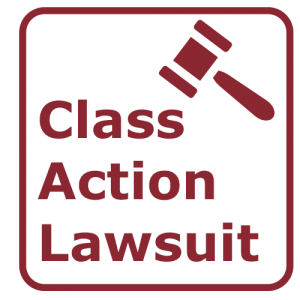Cumulative Justice: The Power and Refine of Class Action Lawsuit Claims
Wiki Article
Comprehending Course Action Legal Action: An Overview for Attorney
Class action legal actions have actually come to be an indispensable part of the legal landscape, permitting the loan consolidation of several claims right into a single action. For lawyers, recognizing the complexities of course activity lawsuits is crucial in successfully representing their clients. This comprehensive overview explores the fundamentals of course action lawsuits, from recognizing possible class members to navigating the qualification process. In addition, it looks into vital approaches for managing course activity litigation and offers understandings into getting and bargaining approval for settlements. By diving right into the ins and outs of class activity legal actions, this overview equips legal representatives with the understanding and devices needed to effectively navigate this complicated location of law.The Basics of Class Activity Lawsuits
Course activity lawsuits are a lawful device employed to combine similar claims from a team of individuals into a solitary legal action, providing a efficient and cost-efficient technique to looking for justice and resolution. This sort of lawsuit enables a depictive complainant, acting on part of the whole course, to bring a case against an accused that has actually purportedly created damage or broke the civil liberties of numerous individuals.The fundamental needs for bringing a class activity claim consist of numerosity, commonality, typicality, and competence of depiction. Numerosity refers to the truth that the class must be so large that joinder of all participants would be impractical.
Class activity legal actions can be useful for both complainants and defendants. For offenders, it provides the opportunity to efficiently resolve several cases in a solitary claim, preventing the demand to defend against countless individual legal actions.
Identifying and Assessing Potential Class Participants
After developing the basic needs for a class action claim, the following step is to recognize and analyze potential class members. If they meet the essential standards., this procedure entails determining who may be part of the class and examining their claims to identify.To determine prospective class members, attorneys generally conduct substantial research study and gather pertinent information. This may involve reviewing documents, conducting meetings, and analyzing records to determine people or entities that may have been impacted by the supposed wrongdoing. It is crucial to establish a clear and thorough listing of prospective course participants to make sure that all affected events are consisted of in the lawsuit.
Once prospective class participants have actually been identified, the following action is to examine their insurance claims. If they meet the lawful requirements for course certification, this entails reviewing the merits of each specific case to determine. Lawyers have to very carefully analyze the truths, proof, and lawful theories of each possible class participant's case to make sure that they have a viable instance.
Evaluating prospective course members also entails identifying whether they fulfill the course definition and have experienced similar injury as an outcome of the defendant's activities. This calls for comparing the truths and situations of each potential course member's circumstance to the accusations and legal theories presented in the lawsuit.
Navigating the Class Qualification Process
To effectively browse the course certification process, attorneys must vigilantly adhere to the step-by-step demands established forth by the court. Class certification is an essential action in a course activity claim, as it determines whether a case can continue as a class activity, standing for a group of people who have similar insurance claims against an offender. The process entails satisfying specific criteria, such as numerosity, commonality, typicality, and competence of representation.Firstly, lawyers have to establish numerosity by demonstrating that the course is so huge that specific joinder is not practical. This can be attained through evidence or specialist testament. They must develop commonness by showing that there are typical inquiries of legislation or truth that predominate over individual concerns. This calls for a detailed evaluation of the cases and defenses entailed.
Next, attorneys have to reveal typicality, which means that the depictive plaintiff's claims are typical of the insurance claims of the class members. This ensures that the rate of interests of the depictive plaintiff align with the rate of interests of the class. Legal representatives should show adequacy of representation, indicating that the representative complainant and their advise will relatively and sufficiently stand for the interests of the course.
To navigate this process successfully, legal representatives should extensively prepare by conducting substantial study, collecting evidence, and establishing a compelling debate that satisfies each of these criteria. They have to likewise be prepared to reply to any type of arguments or difficulties elevated by site the offender. By carefully sticking to the procedural needs established forth by the court, attorneys can enhance their opportunities of acquiring course qualification and advancing the passions of the class participants.

Trick Strategies for Handling Class Action Lawsuits
Upon effectively browsing the class qualification procedure, attorneys have to after that apply key strategies for effectively handling course action lawsuits. These methods are essential to make certain that the instance continues efficiently and successfully, ultimately maximizing the chances of a positive outcome for the course members.
One trick strategy is to develop a solid and natural legal team (Class action lawsuit). This involves putting together a group of attorneys with know-how in class activity lawsuits, along with various other pertinent areas discover this info here such as the specific market or subject issue associated with the case. A versatile group can bring various viewpoints and abilities to the table, improving the overall efficiency of the litigation
Another crucial strategy is to create a well-thought-out and extensive litigation plan. This plan ought to lay out the total purposes of the case, along with the particular legal theories and debates that will be sought. It should also include a timeline and budget to make certain that the case remains on track and within the allotted resources.
In addition, attorneys should actively engage with the course participants throughout the litigation process (Class action lawsuit). This consists of giving regular updates on the development of the case, seeking input and feedback from the class participants, and attending to any kind of worries or questions they may have. By fostering open communication and cooperation, legal representatives can build depend on and assistance among the course participants, which can be instrumental in accomplishing an effective resolution
Resolving Class Action Legal Actions: Negotiation and Authorization
When it pertains to settling class action lawsuits, reliable negotiation and acquiring authorization are necessary actions in achieving a resolution. Class activity lawsuits are intricate and involve a multitude of complainants, making it important to get to a settlement that is fair and sufficient to all celebrations included.
When a negotiation arrangement is reached, it needs to be authorized by the court. The court's duty in this procedure is to ensure that the settlement is fair, affordable, and sufficiently shields the passions of the course participants. The court will certainly consider elements such as the nature of the insurance claims, the stamina of the evidence, the potential recuperation for the course members, and any type of objections increased by course members.
Obtaining court authorization is crucial as it provides finality to the settlement and protects the interests of the class participants. It makes certain that the negotiation is binding and enforceable, and course members can receive their rightful compensation.
Conclusion

Class activity claims have come to be an integral component of the legal landscape, permitting for the loan consolidation of these details numerous insurance claims into a solitary action. Course certification is a crucial step in a course action legal action, as it figures out whether a case can proceed as a class action, standing for a group of people who have comparable insurance claims versus an accused. By carefully adhering to the step-by-step requirements established forth by the court, lawyers can increase their opportunities of acquiring course certification and progressing the passions of the class participants.
The court will think about factors such as the nature of the insurance claims, the toughness of the evidence, the potential healing for the course members, and any type of arguments raised by course members.
By recognizing and assessing potential class participants, legal representatives can establish the viability of a class action legal action.
Report this wiki page